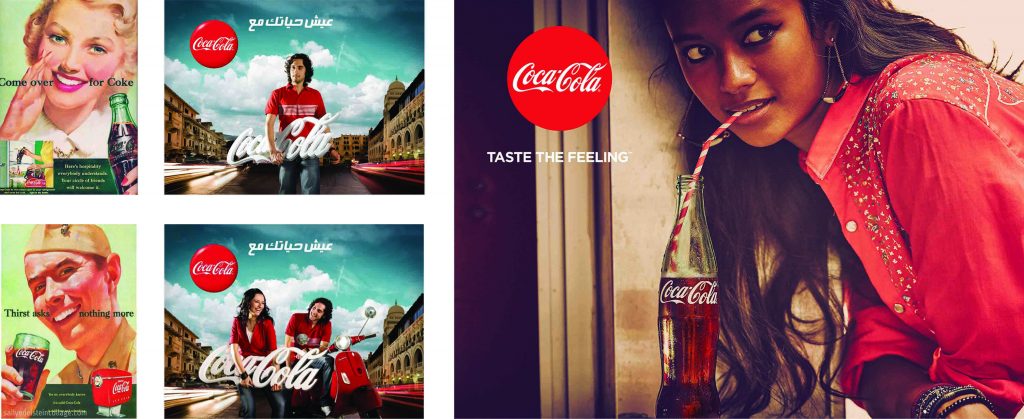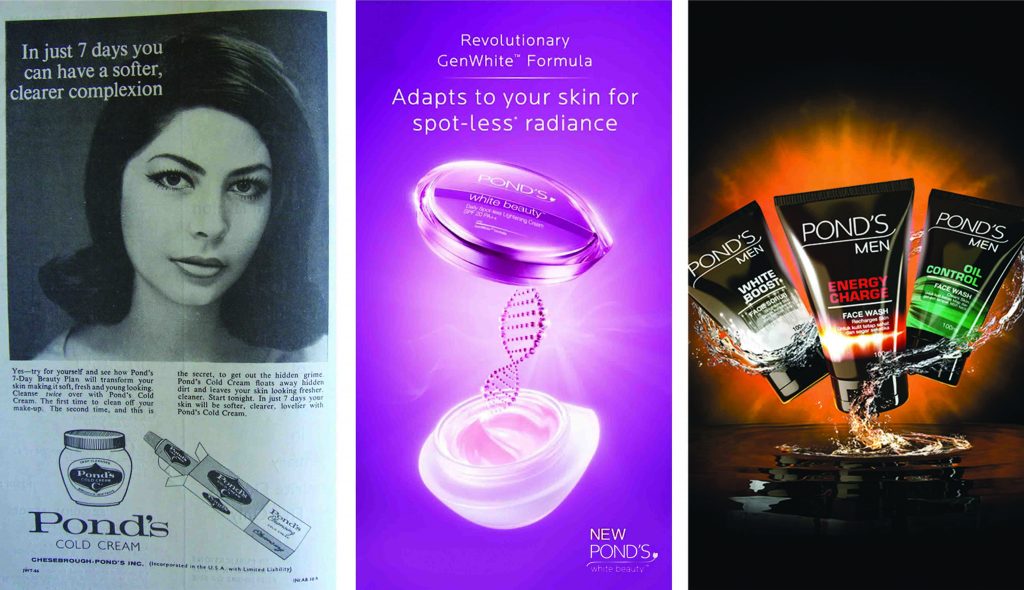We have been listening to and engaged in the debate for years about advertising; whether it should be considered an Art form or a field of Science or both. However, irrespective of the side of the debate you support, we need to accept the reality that advertising has morphed into some new processes, which were not there over two decades ago. The advertising of today is a result of a major evolutionary development due to the rise of digital technology. Please do bear in mind that when I refer to digital here, I am not only referring to the new media vehicles that are in place today, but rather the inspiration and executional tools available to advertising professionals around the world.

The Yesteryears of Advertising
Let me illustrate my point by evaluating one such aspect of the advertising evolution that has taken place. When I started my career as a product/brand manager, advertising processes were entirely manual in nature. Prior to the advent of computers and Macs in the industry, client briefs were mostly written with typewriters with copies marked to client service executives and managers at the brand side. The response from the agency was also typically in the form of hand drawn visuals, mostly prepared by illustrators following directions given by visualizers. At times, both roles were performed by the same person. It was, therefore, important for visualizers to have the ability to sketch or draw the idea to bring it into a presentable form.
The next step in the process was discussion and visual presentation or “the first cut” a term still used today. After the review and rework, if any was required, or direction selection, we would proceed to idea finalization and present options to our management for approval. After the approval the final stage was artwork preparation. This process was quite lengthy and even a regular poster design took a month to produce, making the pace of advertising development really slow. The final artwork process took sometimes as long as a week to complete or more, the processes involved photography for visuals, physically sprayed backgrounds for effects like vignettes etc., the use of text enlargers which required each alphabet to be first printed physically and then pasted on a matt finish background sheet with the help of geometry instruments like set square, rulers and compasses. It would be difficult for some of you born in the 90’s after the advent of the computer revolution to even imagine these manual processes.

Fast Forward to Today
On the flipside today, the process of writing and emailing briefs to the agency and holding discussion sessions through video conferencing cuts down time and effort. The client and agency teams don’t even need to be in the same city or country anymore, yet they can still communicate with ease through technology. Furthermore, the process of creating visuals i.e. the first cut has become far more sophisticated and detailed as it does not need to be done by hand. Visuals are in great detail, as the concept stage itself has evolved and enhanced with the assistance of research based strategic insights, which allow the agency to focus mainly on creative and communication strategies to develop big ideas. Technology has simplified the artwork development process through image libraries due to which, specialized photography is not required all the time.
The purpose of sharing this example is to explain how processes in the advertising industry have changed significantly through the development and deployment of technology. I know this is true about every field across the world; yet, what is most important in this discussion is the need to understand if the process of inspiration has evolved.
We need to understand that every big idea is a result of some new inspiration; whether it is cultural, scientific, environmental, social or political. However, how we are exposed to these influences is also an important aspect of the process. I don’t think at any given time in the past did humans have so much access to information as our current generation does. This means that our average exposure to influences is substantially greater per day than it was ever before.
Take the example of someone carrying out research in modern times, say for example, about the hippie movement in the West during the 1960’s & 70’s. A simple Google search will help you find a host of images and links to pages that will contain information about the movement, such as, the reasons behind it, the duration of the hippie era, their beliefs etc. Can you imagine if that same research were to be done without computers using public libraries, where everything would be available physically in the form of books and newspapers? Imagine the task of sifting through volumes of books; how cumbersome it would be? Furthermore, the information available at each library would be limited to the sources that were at their disposal. It would take time, money and a lot of effort. Even the average Joe today has so much access to information with such ease that it’s almost information overload, since the volume of information far exceeds the capacity to retain it. Having said that, it is better to be faced with information overload than little or unreliable information.

Controversial: The New Black?
Today, we live in a world of opinions, reflections, lifestyles and greater disposable incomes. This creates a complex relationship between brands and consumers, as the latter have access to the internet, which provides them the ability to see trends and competitive brand offerings at the tip of their fingers without ever leaving their homes. A prospective buyer could be sitting in a bus or a train on their local commute to work, or in the waiting room of a dentist and reviewing websites for clothes that they like. They could, at the same time, place orders via cellphone and pay through their online wallets or credit cards without ever physically going to a store. Can you imagine the complexity of the brand-consumer relationship as now advertising professionals have to reach out to these digitally savvy consumers through the mediums they frequent, since not all are willing to physically interact in the retail environment?
In North America, this is one of the biggest challenges for advertisers. The consumer of today has forced the advertiser to move beyond traditional ideas and vehicles, being more diverse than ever. Hence, it is more important to build a connection with them through ideas that are challenging traditions. These days we frequently come across content that questions the boundaries of cultural values and norms. Though humans are all innately good, our desires are not certainly in accordance to that goodness. Advertising today is majorly focused on controversial subjects and ideas that are getting more and more complex. For those of you who haven’t heard of Monster High, I urge you to Google it and have a look at their dolls. They have an application called ‘Frightful Fashion’ which aligns with the positioning of the brand. However, has anyone ever wondered how we have culturally accepted that our children can watch such content with unrealistic characters such as ghosts, werewolves, vampires and sea monsters? Or for that matter, how have we so readily accepted an adult series like Dexter featuring a psychopath as a ‘good guy’? This change in our acceptance of things that crosses boundaries shows that society has evolved in a way that makes many subjects acceptable that were previously considered taboo.
I also wish to share my recent visit to a large toy store where I had not been to in a long time. In the process of selecting a toy for a six year old, I was totally surprised to see the type of characters that are now developed for kids of such a young age. Even a decade ago, some of these new characters would have been totally shunned by parents yet, now it seems that they have resigned to the fact that they cannot stop the tide. Consider this from the point-of-view of the advertising professional, whose only concern is the client’s success and brand ROI, and who is not in the business of judging what is culturally acceptable or controversial. Campaigns are now driven by research and success insights and not if they are morally or socially adequate. Having said that, there are times when there is a major internal conflict among advertising and marketing professionals about how they feel or respond to communication strategies.
I feel that one of the reasons is that different generations are in business at the same time. Some of us are Digital Immigrants, who were born prior to major technological developments, while others are Digital Natives, for whom technology has always been a part of their lives. Therefore this conflict is expected to continue for another decade or two till the Digital Immigrants are retired and the reigns are with the Natives. Who knows, there might be new break-throughs and the Natives might feel alienated by the new Generation X. Either way, the challenge will continue to be a tough one as the evolution of the human race is now unprecedented. Technology, we all realize is more than just a fad. It is real and it influences and changes every one. It affects how we think, our inspirations, how we see others (why do we think certain people are crazy and to what extent) and how we react to new belief systems and experiments.
My two cents of advice to all advertising professionals is to keep things simple and not to get invested in thoughts that create conflicts within yourself. Be professionals and do not judge things in the light of your own values or you will be caught on the wrong side more often than you would think and like. This does not mean that you become insensitive to cultural and societal norms and do whatever it takes to keep your job. In either case, your job is going to be more difficult than ever. However, when you come across a situation where you are at cross roads let your heart decide, that is if you think your heart is in the right place.
